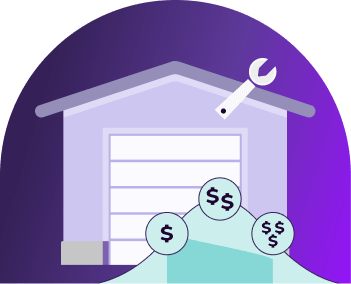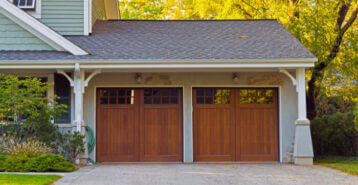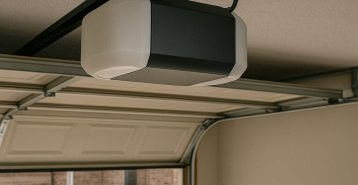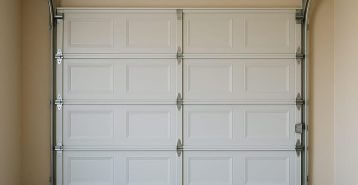Signs You Might Need Garage Door Spring Replacement
Most days, you never give your garage door more than a passing thought. But when it becomes unreliable, you definitely notice. Many things can point to the need for garage door spring replacement, including:
- Visible gaps in the springs, indicating that the springs have stretched to the point of breaking.
- Rust on the springs.
- Loud or unusual noises, such as the squeal of metal on metal.
- A loud “snapping” sound as the door closes.
- A door that opens crookedly, stops halfway up, or won’t close properly.
- The door closes too quickly – often the result of a broken spring.
In most cases, replacing the spring is the simplest and most affordable answer. Reaching out to a garage repair professional is the next step in making sure your garage door is operational and safe.
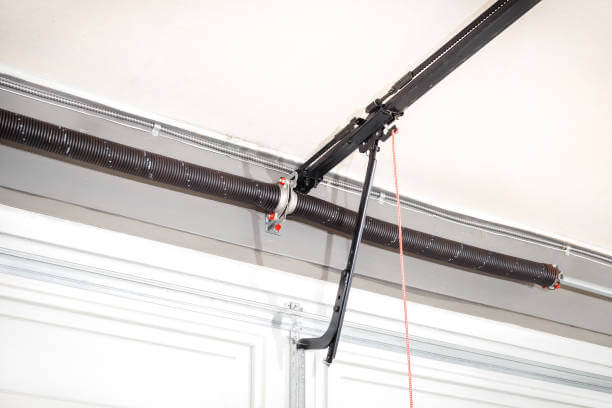
Average Cost of Garage Door Spring Replacement
The average cost to replace a garage door spring is $150 to $350 per spring. However, that cost can vary depending upon a number of factors, including the size of the door, the type of spring, and your local labor costs.
The cost of an extension spring runs about $65, and labor for the replacement will cost between $50 and $100. Torsion springs are more expensive at about $100 each. The labor cost is a bit higher as well, running between $130 and $300 for a pair of springs.
Keep in mind that if there is significant damage to the door, such as the result of a spring failing and creating dents or other problems, you might see a higher bill.
Cost by Type of Garage Door
The type of door and its weight are two major factors in what sort of spring you need and what the labor costs will be. The heavier the door, the more powerful the spring must be to move it, and the more expensive it will be to repair it. The type of door matters as well. Here’s a general rundown on costs for common garage door types.
| Type of Garage Door | Average Cost Range |
|---|---|
| Wood Door | $250 to $800 |
| Steel Door | $100 to $300 |
| Glass or Custom Doors | $300 and Up |
| Single-Panel Door | $150 to $350 |
| Sectional Door | $150 to $350 |
| Roll-Up Door | $250 to $800 |
| Tilt-Up Door | $150 to $400 |
Cost by Spring Type
The type of spring you have on your door makes a difference in the overall cost of repairs. Torsion springs are great for about 10,000 cycles, which translates to 7 to 10 years of daily use. Extension springs, on the other hand, are good for about 10,000 cycles, or 7 to 12 years of use. Here’s more about each spring type.
Torsion Springs 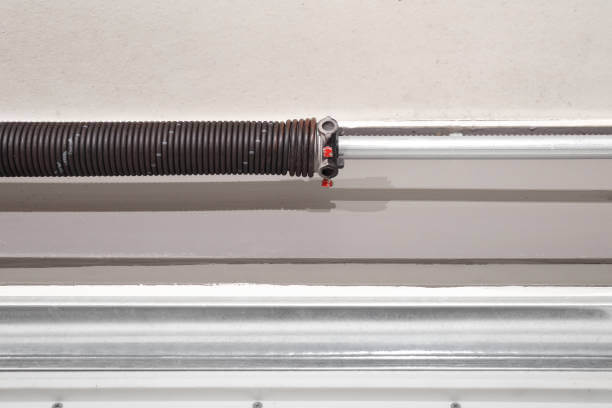
Torsion springs work by counterbalancing the weight of the door, making it easier to lift. As the door opens, the torsion springs unwind around a metal shaft and lift the door. They coil back into place when the door closes. These springs are the most common type, are very durable, and are often used for heavier doors.
Torsion springs are usually considered safer than extension springs, as they offer precise control. They are less prone to snapping without warning; there are often many signs that the spring is failing before it actually does.
These springs run between $250 and $450 each.
Extension Springs 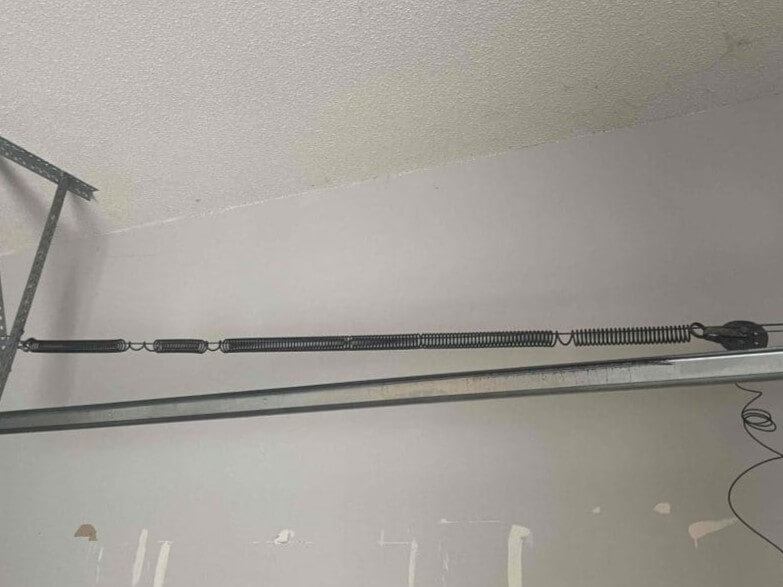
Extension springs are more common on older doors or those made of lighter materials. These springs connect to the frame of the door and stretch and compress as the door lifts. Since they aren’t as powerful as torsion springs, they usually cost less, but they also have a shorter lifespan.
However, though they aren’t as powerful as torsion springs, they are more dangerous. That’s because they are under more tension and thus more likely to snap. They can also be much less predictable, sometimes breaking with no warning.
These springs cost between $150 and $200 each.
Cost by Number of Springs
If you have more than one spring, it’s imperative to replace all springs at the same time. The last thing you want is to repair one spring and then have the other fail shortly thereafter, necessitating another call to the pros. Replacing the springs at the same time also helps ensure safety, as a more powerful new spring working with an older, less powerful spring can lead to additional problems with your door. Here are the basics of cost:
| Number of Springs | Torsion Spring Cost | Extension Spring Cost |
|---|---|---|
| 1 | $250 to $400 | $150 to $200 |
| 2 | $500 to $800 | $300 to $400 |
| 3 | $750 to $1,200 | $450 to $600 |
| 4 | $1,000 to $1,600 | $600 to $800 |
Regional Pricing Differences
Where you live makes an enormous difference in the costs of replacing a garage door spring. As a general rule of thumb, those who live in metropolitan areas will see a higher rate of labor than those who live in rural areas. However, some rural areas might see surprisingly high rates if there are very few technicians available or if they must drive a long distance to get to you.
Cost Factors That Influence Price
There are a few factors that affect your bottom line:
- Type of Spring: A torsion spring is more expensive than an extension spring.
- Garage Door Weight and Size: The larger the door, the heftier the springs, the more expensive it can become.
- Number of Springs: Replacing two springs is usually more expensive than replacing just one.
- Type of Garage Door: Garage doors operate differently depending on the model. A spring on a roll-up door is more expensive than that on a tilt door, for instance.
- Emergency or Weekend Repair: If you need repair work after hours, on weekends, or in the event of an emergency, you will pay a premium.
- Conversion Between Spring Types: If you choose to try a different style of spring on your garage, that could cost more for installation.
- Local Labor Rates: What the going rate is in your area makes a difference in your final quote.
- Travel Charges: Most technicians will travel within a particular city or distance with no extra charge; if you live far away from anywhere, you might see travel fees for their time.
- Surprise Costs: If the technician finds an issue with your garage door that needs to be repaired for your safety, there will be a higher charge to take care of that additional problem.
DIY vs. Hiring a Professional
You might look at a garage door spring and think it would be easy to fix; however, what you might not see is the immense pressure that the spring is under. Only those with a solid knowledge of garage door opener repair and the proper tools to make it happen should ever attempt to replace a garage door spring. The pros know how to ensure safety.
DIY Garage Door Spring Replacement
When you choose to replace a spring yourself, always remember that the spring is under serious tension. Releasing the spring without the proper tools can mean a very dangerous situation. That’s why it’s highly recommended that a pro handle this.
While you might save a little bit of money if you choose to do it on your own, keep in mind that if something goes wrong, you’ll have to call in a professional anyway – and besides that, if you are injured, the medical bills are bound to be much more than it would have cost to call the pro to handle the work.
Professional Garage Door Spring Replacement
When a professional changes your garage door spring, you can look forward to professional service that not only replaces the springs but also checks over all the other components to look for potential problems. The work usually includes a warranty, so you can rest assured it’s done properly.
After the replacement, it’s a good idea to begin scheduling regular maintenance for the door, if you haven’t already. This will help keep the door in tip-top shape.
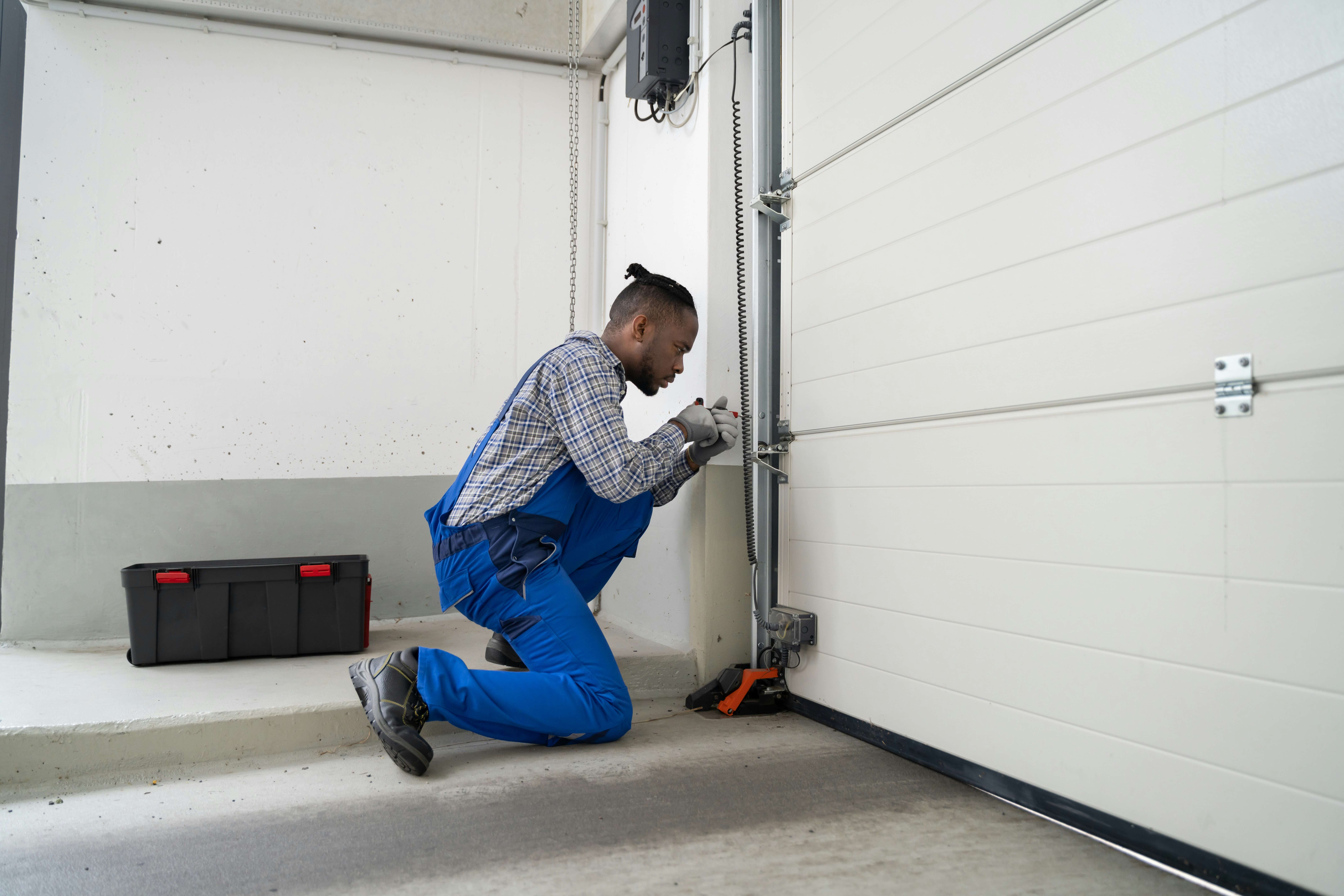
How to Save Money on Garage Door Spring Replacement
Garage door spring replacement can be pricey, especially if you have a large door with two or more springs. Here are ways to bring that cost down.
- Get at least three quotes. Shopping around for quotes can help you understand the local labor costs in your area. (This works well for a routine replacement, but you might not have the luxury of three quotes in an emergency.)
- Bundle services if you can. When you get the quotes, ask about bundles. You could get a solid idea of what it might cost to do other work on your garage door, such as fixing dents or replacing sensors. If you bundle the work, you could see a discount.
- Choose higher-cycle springs. Look at the number of cycles your springs can handle. The more cycles you can get out of your new springs, the better.
- Opt for off-season scheduling. Many companies will offer a nice discount if you choose to have the work performed during their off-season. This requires some flexibility, but it can be worth it in savings.
- Perform regular maintenance. The best way to save money is to avoid repairs in the first place. This means performing regular maintenance on the garage door, opener, and related components. Follow the manufacturer’s instructions for your particular garage door.
